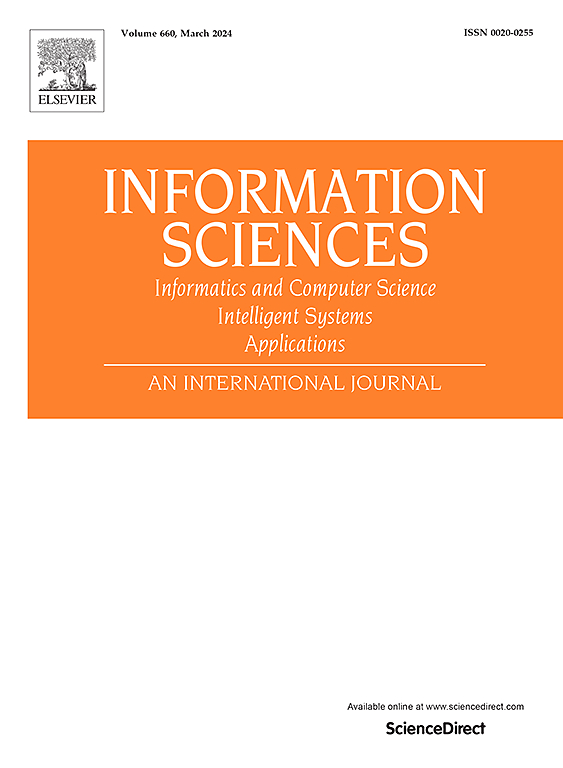一种新的最短最优约简计算方法
IF 6.8
1区 计算机科学
0 COMPUTER SCIENCE, INFORMATION SYSTEMS
引用次数: 0
摘要
粗糙集理论已经成为一种鲁棒的软计算模式,用于特征选择,通常被称为约简计算。一个决策系统可能包含多个不同大小的约简,它们都提供了相同的分类能力。然而,当模型性能是一个关键因素时,由于其简单性和可解释性,通常首选最短约简。差别矩阵法是一种广泛使用的计算这类约简的技术。尽管这种方法很有效,但它的计算量很大,并且被归类为NP-hard,这限制了它在数据集上的可扩展性,在这些数据集上,可辨矩阵的计算变得不可行的。本研究通过引入一种结合宽度优先搜索控制策略和增量方法来计算吸收差别矩阵的新方法,解决了传统基于差别矩阵方法的局限性。广度优先搜索策略能够有效地探索搜索空间,尽早找到最短的最优约简,增量吸收差别矩阵增强了算法的计算可扩展性。为了验证所提出的方法,对两种最先进的算法进行了实验评估:基于差别矩阵的广度优先搜索策略和基于吸收差别矩阵的minreduce基准方法。结果证明了卓越的计算性能和在不影响正确性或最优性的情况下更早地发现最短约简。本文章由计算机程序翻译,如有差异,请以英文原文为准。
A novel approach for shortest optimal reduct computation
Rough set theory has emerged as a robust soft computing paradigm for feature selection, commonly known as reduct computation. A decision system may contain multiple reducts of varying sizes, all offering equivalent classification capabilities. However, when model performance is a critical factor, the shortest reduct is generally preferred due to its simplicity and interpretability. The discernibility matrix method is a widely used technique for computing such reducts. Despite its effectiveness, this method is computationally intensive and classified as NP-hard, limiting its scalability for datasets where discernibility matrix computation becomes infeasible. This study addresses the limitations of traditional discernibility matrix-based approaches by introducing a novel method that combines a Breadth-First Search control strategy with an incremental approach to compute the absorbed discernibility matrix. The Breadth First Search strategy enables efficient exploration of the search space to identify the shortest optimal reduct early, while the incremental absorbed discernibility matrix enhances the computational scalability of the algorithm. To validate the proposed method, an experimental evaluation was conducted against two state-of-the-art algorithms: Breadth-First Search, representing the discernibility matrix-based strategy, and MinReduct, a benchmark for absorbed discernibility matrix-based approaches. Results demonstrate superior computational performance and earlier discovery of shortest reducts without compromising correctness or optimality.
求助全文
通过发布文献求助,成功后即可免费获取论文全文。
去求助
来源期刊

Information Sciences
工程技术-计算机:信息系统
CiteScore
14.00
自引率
17.30%
发文量
1322
审稿时长
10.4 months
期刊介绍:
Informatics and Computer Science Intelligent Systems Applications is an esteemed international journal that focuses on publishing original and creative research findings in the field of information sciences. We also feature a limited number of timely tutorial and surveying contributions.
Our journal aims to cater to a diverse audience, including researchers, developers, managers, strategic planners, graduate students, and anyone interested in staying up-to-date with cutting-edge research in information science, knowledge engineering, and intelligent systems. While readers are expected to share a common interest in information science, they come from varying backgrounds such as engineering, mathematics, statistics, physics, computer science, cell biology, molecular biology, management science, cognitive science, neurobiology, behavioral sciences, and biochemistry.
 求助内容:
求助内容: 应助结果提醒方式:
应助结果提醒方式:


